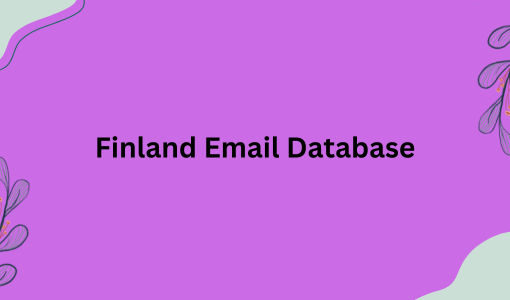Every month, online stores lose large amounts of money due to abandoned carts, customers abandon Ways to Bring their carts and do not complete their purchases, and thus business owners miss out on potential sales. However, this situation should not be tolerated, because regaining lost customers is just Ways to Bring an effectively implemented chain of emails.
Bringing customers back to your online store or website is not a free and easy task. You will have to create a sales funnel with landing pages and a chain of letters, create content and a strategy, or launch paid ads to attract traffic to the site. And now that you have everything prepared, your efforts will pay off the very moment the customer clicks the “Add to cart” button. At least, you think so…
But alas, analytics show that customers
leave the site without making a purchase. Perhaps their parents called them, they found a more attractive offer, or the cost of delivery was high. The most important thing is that the potential customer left the site and you need to get them back. That is Cameroon Email Database why it is important to know how to return customers who will subsequently buy a product or service.
Lost sales and benefits
According to statistics, approximately 2 / 3 of customers do not complete their purchases, i.e. the number of abandoned carts is 70% ( source ). Now think about your sales, the size of your losses over a month or even a year. Hundreds, thousands of rubles, dollars or euros.
Abandoned Cart and Newsletter
What are the benefits of a mailing list when you need to bring customers back to your online store? Unlike cold calls and promotional materials, the customer has already shown interest in the product or service.
There are many examples where companies use newsletters to bring back customers. For example, Rebel.com boasts automated campaigns and a 41.65% open rate. And they are not alone. Peak Design brought back 12% of customers with a simple email campaign.
Simple Abandoned Cart Email by Peak Design
Creating customer re-engagement campaigns is a simple task, even the Get Response Buy Email Database List platform has marketing automation tools that will help you create, send, and analyze the results of your campaigns.
Beautiful Abandoned Cart Email Design
If you are creating an email campaign for lost customers, the first step to success is great design. I don’t mean just using fancy fonts or flashy graphics. You should pay attention to:
a strong call to action
The average office worker receives 12 messages every day and, without a doubt, ignores most of them. If a former customer does not open the message, there is no chance that you will return the customer to the online store. If you want to stand out from the competition, use triggers in the headlines and motivate users to open your email.
When creating your headline, use as many triggers as possible, such as:
curiosity – make former clients want to know more. Hint at something Mailing Data they might be interested in, and then reveal the important details in the letter;
limited – show the client offers that are limited in time and that they may not have time to buy;
social proof – show cases or the number of customers who liked the product;
Brevity – Use a short, simple headline instead of a long-winded sales pitch;
Attractive offers – promise something very valuable and thus bribe former customers to open your letter;
Personalization – Include the customer’s name or product name in the message subject.
Below we present an example that combines several triggers.
letter to former client with multiple triggers
If lost customers have opened the email , you need to re-engage them with relevant content.
When using emails to return customers to the shopping cart, it is important to remind them that the purchase is not complete and list specific products with photos. However, do not stop there and grab their attention by highlighting the benefits of the product or service.
Victoria Secret letter to former customer with product benefits
Once past customers are engaged, you need to nudge them toward purchasing with a strong call to action. There are two approaches: first, a single call to action, like this email from.



